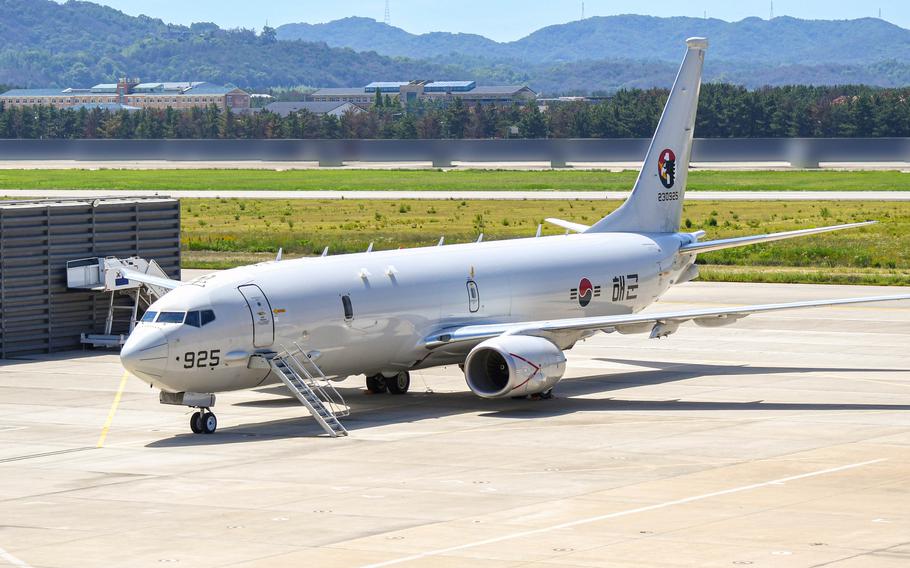
A South Korean Navy P-8A Poseidon at the Pohang Aviation Command in Pohang, South Korea, on July 1, 2025. (South Korean Navy)
CAMP HUMPHREYS, South Korea — Six P-8A Poseidon maritime patrol planes were inaugurated into South Korea’s navy Thursday in hopes of better detecting sea-based threats in and around the Korean Peninsula.
The twin-engine aircraft, delivered in June 2024, began flying for the South Korean navy Thursday, the service said in a news release the same day.
South Korean pilots, crew members and mechanics familiarized themselves with the aircraft for a year before reporting to the fleet for operations, according to the navy.
South Korea’s military purchased six Poseidons from the United States for roughly $1.6 billion in 2018. The aircraft is meant to replace the South Korean navy’s aging fleet of P-3 Orions, which have been in service since 1995.
All P-3 flights in South Korea were paused May 29, after one of the jets crashed into the side of a mountain in Pohang, about 170 miles southeast of Seoul. All four crew members were killed.
The U.S. began replacing its P-3s with the P-8As in 2012. The Navy operates around 120 P-8As as of last year, according to the service’s website.
Based on Boeing’s 737-800 platform, the P-8A can fly at a maximum altitude of 41,000 feet and has a top speed of 490 knots, according to the company’s website.
While its primary purpose is for maritime surveillance and submarine detection, the Poseidon can be equipped with anti-submarine torpedoes and Harpoon anti-ship missiles.
Other countries to use the Poseidon include Australia, Germany, India, New Zealand, Norway and the United Kingdom.
A U.S. Navy P-8A took its first flight over South Korean airspace during a five-day joint exercise starting March 27, 2014, according to a U.S. Forces Korea news release at the time.
The P-8A’s introduction comes after North Korea flexed its maritime might in recent months.
On March 8, the state-run Korean Central News Agency reported the military was building its first nuclear-powered submarine and published photos of leader Kim Jong Un inspecting the supposed vessel at an undisclosed location.
The communist regime operates nearly 100 diesel-powered submarines, according to the South’s military, which have a limited range and are easier to detect compared to its nuclear-powered counterpart.
North Korea also launched a new 5,000-ton destroyer with “new generation” attack capabilities, KCNA reported June 13. The media outlet reported the ship was fully repaired and relaunched after it capsized three weeks earlier, a claim that independent experts have disputed.